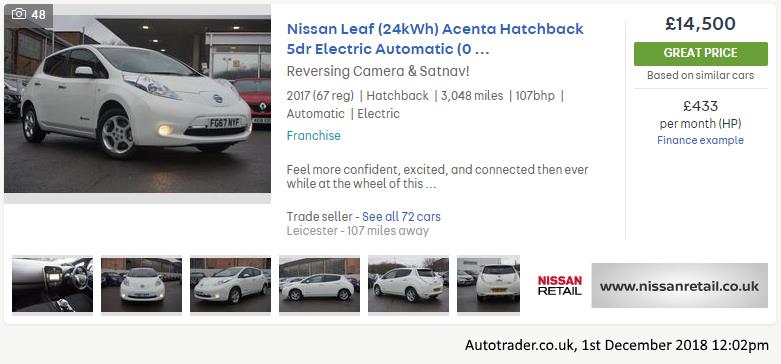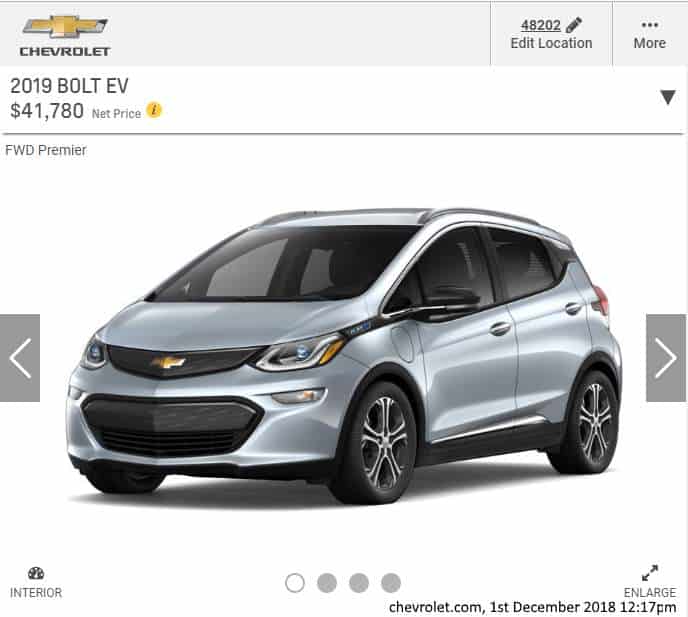Electric cars have some brilliant features, lower maintenance costs, lower running costs and are much better for the environment than gasoline-powered cars. It’s no wonder that they have, therefore, piqued the public’s interest and more people than ever are interested in buying them.
Unfortunately the upfront cost of an EV is still quite high: prohibitively so for many hard-working, working class families. For example the popular Nissan Leaf – billed as one of the cheapest electric cars – starts at $29,990. This compares to $23,000 or less for a similar, gasoline powered car. Hence for many families, this extra $7,000+ relative cost means that they’re unable to buy an electric vehicle… or are they? This article explores the option of getting a bargain on mainstream electric cars (we say mainstream because we doubt you can do the school-run with a go-kart sized 2 seater EV!).
Note: it’s worth mentioning that the term ‘working class’ can mean different things in different countries. Since this website serves an international audience, we wanted to clarify that in this article, we mean it as a clear positive: ‘working class’ families simply refers to the vast majority of hard-working families out there.
The problem with buying new EVs: expensive batteries
As seen above, one of the cheapest EVs (the Leaf) is $7,000+ more expensive than a similar gasoline powered car. This pattern is unfortunately seen throughout the EV market right now: research by Kelley Blue Brook has found that the average EV sale price in May 2018 was $36,539, compared to an average of $20,528 for a gasoline-powered compact car. This is due to the sheer cost of the battery pack that goes into an EV: currently around $205 per kWh. What this means in practical terms is that the cost of the battery pack in a Chevy Bolt EV is $15,734.29 at list price (more when delivery is taken into account)! This is close to half the overall MSRP of $36,620.
As our running costs analysis has found, electric cars are great once you own them because of their significantly cheaper fuelling costs. So for working class families, there’s almost a catch 22 situation: in order to save money (fuelling costs), you need to spend more than you want to in buying a new EV. It’s almost like the phrase “It takes money to make money”.
Thankfully, though, there are options available to you – as the above few sections will describe.
Option 1: Leverage depreciation; buy a ‘nearly new’ used EV
We all know that cars drop in value the moment you drive them off the dealer forecourt. A 12 month old gasoline car can lose anything from 15-35% of its value, for example. But is this the same for EVs?
It is, and even more so: the entry-level Nissan Leaf Acenta shown below has lost 45% of its value in a year in the UK:


It is almost £12,000 ($15,306.02) cheaper with just 3,000 miles on the clock. This was the first example we checked, too. We have seen UK reports of EVs losing more than 50% of their value within 12 months.
In America, it’s a similar story – not quite as much first year depreciation, but still more than gasoline-powered car depreciation:


It’s almost $10,000 or 25% cheaper with just over 10,000 miles on the clock (again, this was the first example we checked). Whilst this is nowhere near the level of UK depreciation, it’s still more than gasoline cars lose in America. As Autotrader have found, a 4 year old BMW i3 loses 50% of its value, compared to a 4 year old BMW 328i which loses closer to 33% of its value. Looking at some of this America EV sale data closer:
You can see that the gasoline cars hold their value better than the EV ones. You can naturally use this to your advantage: buying a used EV with somewhat low mileage (i.e. where the battery capacity should still be fairly healthy) can yield you a potential bargain.
Option 2: State/country tax credits and subsidies
Many countries and American states have their own tax credit/subsidies system for electric cars. America have up to $7,500 in federal discount, plus some states have further tax credits on top:
- Colorado: $5,000 tax credit
- California: $2,500 – $4,500 rebate
- Connecticut/Maryland: $3,000 rebate/tax credit (respectively)
- Many other states:: $2,000 or less overall rebates/tax credits
This could mean $10,000 or more off a new electric car. Norway also has some great Government subsidies which mean that electric cars are often cheaper to buy than gasoline cars!
There’s naturally a lot of variation here (state by state, and country by country) but we would suggest that you keep an eye out on your local news source. A new green car tax credit, rebate or subsidy might mean that a brand new EV could become financially viable for you… especially with electric cars getting cheaper (in general) right now.
Option 3: Wait 2-5 more years!

This might seem like weird advise from a green car website, but if you’re able to carry on with your conventional car for now, we would suggest to wait a few more years. This is because the cost of car batteries is falling all the time – and as we mentioned at the start of this article, this can be half the overall cost of an EV.
The American investment firm Morgan Stanley predicted earlier this year that lithium prices (the main material of an electric car’s Lithium-ion battery pack) will fall by 45% in the next 3 years. This would help drive the price per kWh of batteries down from over $200/kWh currently to below $150/kWh by 2020-2021.
This fairly significant price fall (with the most expensive component of electric cars!) could see them reach a similar price to gasoline cars within a few years: hence our advise to possibly hold off on buying an electric car for 2-5 more years.
This point is also backed by research firm McKinsey who say that a combination of improved EV build approaches and manufacture designs will lead to EVs becoming cheaper than conventional cars “by the early to mid-2020s”, with between $5,700-$7,100 of cost savings (for car manufacturers) per car: meaning lower purchase/lease prices for us consumers!
Option 4: Leasing
Leasing an electric car (instead of buying it outright) is another potential option. There’s still various tax credits and rebates available for leasing, plus there’s other benefits to leasing over buying:
- Less risk: whilst the batteries last a long time in electric cars, there’s always the risk that your EV’s battery capacity falls quicker than average. And whilst most warranties are generous in this regard, it’d be very expensive if it somehow wasn’t covered under the warranty. Leasing eliminates this risk of owning an EV with a dodgy battery.
- Tech is improving constantly: electric cars’ technology is improving all the time, and so leasing will allow you to reap the benefits of this by getting a new electric car every 1-2 years.
- Only the monthly cost: you only have to worry about being able to pay the monthly cost of the lease (or end the lease early and hand the car back, in the worst case!). This is unlike owning an electric car, where you’ll have to find a sizeable deposit (at a minimum) before you can purchase it.
- Lower monthly costs: the relative monthly cost of leasing is lower than the relative monthly cost of buying a car and paying it back monthly. This is due to a combination of how tax rebates work in some countries, and also because depreciation (see option 1 earlier) is more ‘baked in’ – aka taken into account – with the lease prices.
Bloomberg reported in 2017 that almost 80% of BEVs were leased in America, so this is clearly a popular option.
Conclusion
That just about wraps up this article on ways that working class families can potentially get an electric car on a budget. It’s an exciting time for green cars, and we predict that ownership will spike in the next few years as the price (for new and hence used cars) should fall consistently.
As we’ve mentioned above, battery costs might fall by 45% in just a few years; and with this making up to half the overall cost of an electric vehicle, such a price drop could permanently reduce the list price of EVs by 25% or more. Coupled with buying a ‘nearly new’ (12 month old) used car which is a further 25-50% cheaper, you could get a real bargain purchase in just a few years (… and until then, maybe lease?!)
Happy buying and driving!